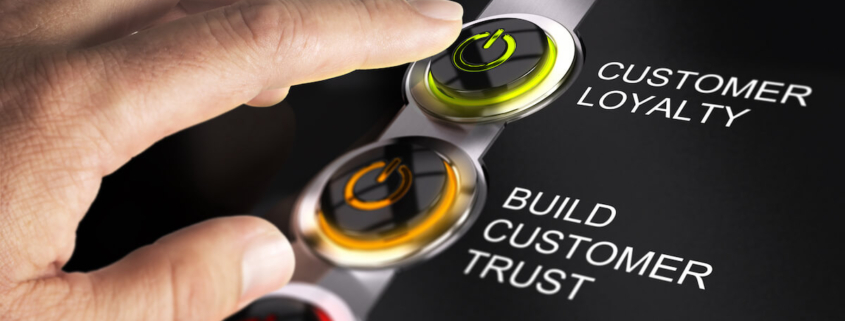Loyalty vs. Trust: What Senior Living Marketers Need to Know
When it comes to loyalty vs. trust, you might think the difference doesn’t matter because brands need both. Not so fast! It’s important to understand what they are, how (and if) you can build both, and why one is more essential than the other when marketing your senior living community.
So let’s dive in, shall we?
Below, we’re going to discuss the following:
- The difference between loyalty and trust
- Which one you need to build first—and why
- How to foster one and reward the other
Loyalty vs. trust—what’s the difference?
Loyalty means a strong feeling of support or allegiance. Trust, on the other hand, is believing that someone or something (like a business) is reliable and honest.
Which comes first: loyalty or trust?
If you want to build meaningful loyalty, you need to work on building trust first.
What do we mean by “meaningful” loyalty? Let’s illustrate this through an example. In the HBO series The Sopranos, our main character—Tony Soprano—is a mafia boss. He has a loyal team, but much of that loyalty is born out of fear, obligation (because of family ties), or both.
Even though most of Tony’s people are loyal, they don’t trust him—and for good reason. This is the mafia, after all. Wise guys know enough to always be looking over their shoulders. Trust is totally absent. Their “loyalty” to their boss derives from their fear of sleeping with the fishes. (C’mon, we couldn’t resist!)
That’s not the sort of “loyalty” any brand would want—especially senior living communities. Instead, the loyalty you’re trying to achieve is the kind that derives organically from trust.
Build trust first. Loyalty will (eventually) follow.
At its simplest, brand trust is how much confidence prospects and customers have in the business to deliver on its promises. So if you want people to trust your brand, don’t break your promises. (The same holds true in everyday relationships.)
Keep in mind that brand trust is . . .
- Earned over time
- Based on perceptions by prospects, residents, and their families
- What fuels loyalty
Remember, so many little things go into building brand trust.
Consider the following scenarios and how each can help build trust—or break it down:
- Does the senior living sales rep call back with answers to questions as they promised? If yes, great. You’re establishing trust. If not, well—you can fill in the blanks.
- Does the tour deliver what the community’s website promised about the grounds, residences, and food? It seems so simple, but your marketing messages need to be consistent AND true/accurate.
- Do the marketing and sales departments “respect” where prospects say they are in their buying journey? For example, a prospect says they only want email communications, but the minute they submit a website form, someone from the community calls them. This sort of behavior won’t make a prospect trust you.
In the case of senior living communities, trust-building goes WAY beyond marketing.
Before you can expect prospects to trust your community, a culture of trust needs to exist within the community itself. This culture of trust needs to be fostered from the C-suite on down. Employees need to trust management. Residents must trust the staff they regularly interact with, like activities and dining. Prospects need to trust what the marketing and sales teams say on the website, social media, and email.
And here’s the thing about trust: It can take a long time to build, but an instant to crumble. If a prospect catches you in a lie (whether the “you” is a marketing message, a sales rep, or a staff member in the community), it’s incredibly hard to recover from that.
But if you can build trust with prospects who ultimately become residents, guess what? This earned trust will drive meaningful loyalty.
Not all prospects who trust your community will become residents, however. (And that’s OK.)
You should still work on building trust with all prospects. First, it’s the right thing to do. Second, even if the prospect passes on your community, they could still recommend it to someone else.
This is true for any big purchases in life. For example, you might trust several car makers or appliance brands, but you ultimately have to choose one. Same with senior living communities.
The residents who do trust your community will become loyal to your community—and their family and friends likely will as well.
Remember, it’s impossible to have truly loyal residents without trust. So make sure your community works on building trust first.
Reward residents’ loyalty by developing thoughtful loyalty reward programs.
Loyalty reward programs are popular for many consumer brands, from coffee shops to restaurants. With bigger purchases, like senior living, loyalty reward programs can be trickier. After all, people aren’t buying multiple times and expecting their tenth purchase to be free.
But one type of loyalty reward program that does work well is a “Make Your Friends Your Neighbors” campaign. If the resident refers a friend to your community and the friend moves in, the resident gets a reward (typically in the form of a rent credit).
You and your team can get creative and come up with other loyalty reward programs The key is making the program easy to participate in—and making sure the program has a worthwhile reward.
Need help building trust with prospects?
First, check out this blog post we wrote on the subject. Then, get in touch, and let’s discuss how our team can assist.




